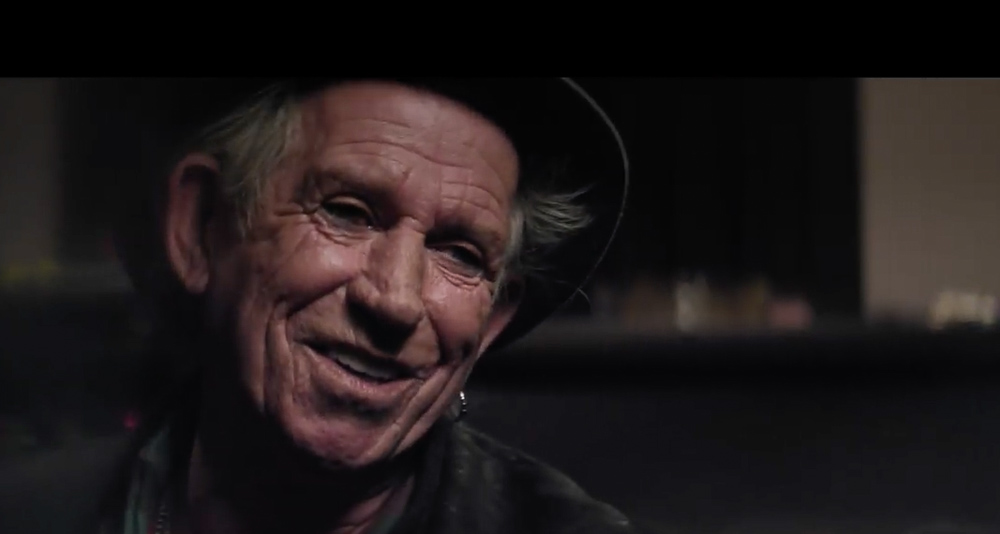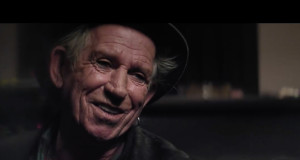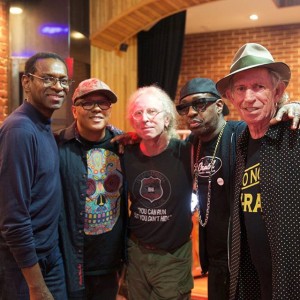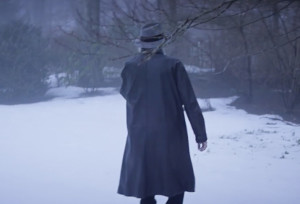

By DONNA BALANCIA — Keith Richards “cackled” when he first saw the documentary Under The Influence, and exerted his right to approval of the film’s final cut, director Morgan Neville told an audience at the GRAMMY Museum Thursday night.
“I didn’t have final cut, Keith did,” director Neville said after a screening of the Netflix documentary shown through The GRAMMY Museum’s Reel To Reel program. “He watched it and he was cackling. Then he said, ‘I have one comment, don’t change a f***ing thing.'”

It is clear Neville enjoyed working with the famous Rolling Stones rocker known for his casually rebellious image. The documentary, produced to promote Richards’ latest solo album, Crosseyed Heart, was intended as an interview piece, but Neville pushed to create a feature-length production, financed mainly by the label.
Throughout the film, artists admired by the 71-year-old Richards, and those who admire him also appear on screen, discussing influences that have permeated “Keef’s” music.
Neville “curated” a pile of vinyl that he brought to Richards to elicit reactions to the film. Richards enjoys everything from Mozart to Muddy Waters, and a lot of work in between.
Among those who had a lot to say about Richards is Tom Waits, who has extensive screen time in the film.
“Tom Waits showed up with six pages of handwritten notes on what he wanted to say about Keith,” Neville said. “At the end, he was like, ‘Did I do OK?'”
Richards and Waits met while collaborating on Son of Rogues Gallery, the collection of pirate songs assembled on an album by Johnny Depp and producer Hal Willner.
Despite his enormous wealth and fame as a musician, and his bigger than life persona as a hard-partying and resilient rock star — Richards keeps a down-to-earth image. In the film, he walks bare-footed through the grass, and seems equally happy wearing light green shoes walking through the snow.

Shot with anamorphic lenses, lending a dreamy and reflective quality, Neville said he opened the film with Mozart’s “The Magic Flute,” to illustrate that what the viewer is about to see about the well-known Rolling Stones side man would be different that what was expected.
The film also shows how technology has changed the way artists record today.
In addition to original footage of Richards relecting on artists who have impressed him over the years, the film draws upon bits of other documentary footage about the Stones and — even Ebay.
Richards had told Neville he used a Norelco cassette tape recorder to record acoustic guitar and play it back for effect and then record over it for “Street Fighting Man. After several tries, Neville found a similar unit on Ebay and set it up for Richards to play to during the doc.
“We went through a few of them, and this one didn’t rewind — we had to use a pencil to rewind the tape,” Neville said. “That was a geek moment.”
What was it like to work with “Keef?”
“It was either he is like in a higher state of Zen or ‘I don’t give a f***,” Neville said. “There is zero difference when he’s on camera or off camera. He’s just himself.”
Things went so smoothly, the film took a mere four months to make, Neville said.


